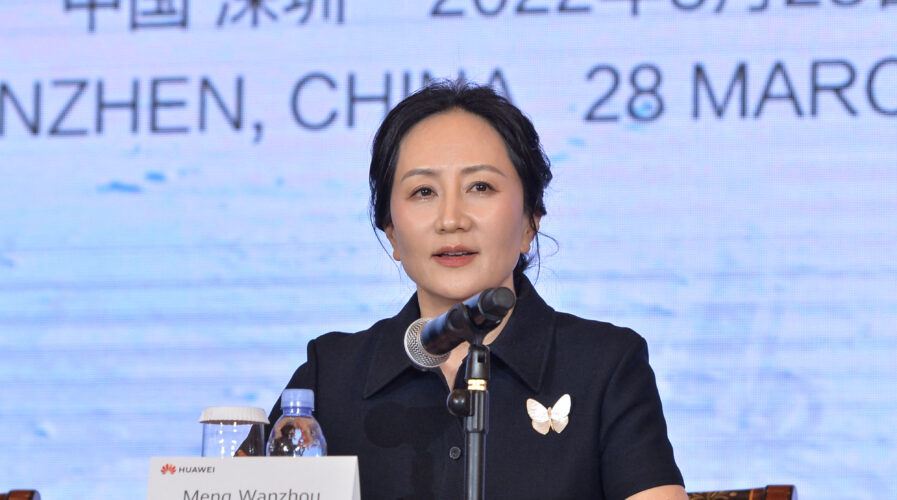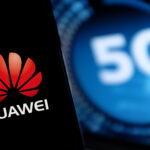
Huawei chief financial officer Meng Wanzhou speaks during the Huawei 2021 Annual Report Press Conference in Shenzhen, in China’s southern Guangdong province on March 28, 2022. (Photo by AFP)
Enterprise solutions sees Huawei recording net profit despite US sanctions
The past two years have been challenging for Chinese telecom giant Huawei in the US. The Chinese telecom company has been caught in the crosshairs of the US-China trade and technology standoff, with the administration of former President Donald Trump moving to cripple it over cybersecurity and espionage concerns.
Despite being heavily hit by US sanctions, Huawei still reported record profit for 2021. The company posted a net profit of 113.7 billion yuan ($17.8 billion) last year, a rise of 76% on the year, but revenue slumped by around 29% as it grappled with US sanctions aimed at blocking access to key technology and supplies.
Chief financial officer Meng Wanzhou, also the daughter of CEO and founder Ren Zhengfei, appeared at a news conference in Shenzhen to publish the company’s annual results for the first time since being held in Canada in 2018 on a US warrant.
“Despite a revenue decline in 2021, our ability to make a profit and generate cash flows is increasing, and we are more capable of dealing with uncertainty,” Meng said in a statement Monday.
The company attributes its profitability to “improved product portfolios and more efficient internal operations”, with a rise in net profit margin even with gains from the sale of its budget phone brand Honor excluded.
Huawei, a supplier of telecom networking gear and smartphone brand, has been struggling since Trump in 2018 launched a campaign to contain the company. Smartphone sales stalled after the US cut Huawei off from key parts and barred it from using Google’s Android services.
To solve this, Huawei rolled out its HarmonyOS. The company remains focused on building out its openEuler, MindSpore, and HarmonyOS ecosystems based on the principles of open collaboration and shared growth. Over eight million developers are currently using Huawei’s open platforms, open-source software, and development tools to explore new business scenarios and business models
At the same time, Huawei only logged 243 billion yuan in consumer business sales in 2021, almost 50% down from 2020.
As such, Huawei has instead tried to shore up other parts of its business, refocusing on the Chinese market and diversifying to encompass enterprise and cloud computing, along with other business segments related to 5G networks.
The company’s enterprise business grew rapidly, generating 102.4 billion yuan in revenue in 2021. In the past year, Huawei launched 11 scenario-based solutions for key sectors such as government, transportation, finance, energy, and manufacturing.
The company also established multiple dedicated teams, including a Coal Mine Team, a Smart Road Team, and a Customs & Port Team, to combine resources in a way that more efficiently serves the needs of its customers. Over 700 cities and 267 Fortune Global 500 companies have chosen Huawei as their digital transformation partner and Huawei now works with more than 6,000 service and operation partners around the world.
“Moving forward, Huawei will advance its journey of digitalization, intelligent transformation, and low carbon. Relying on talent, scientific research, and an innovative spirit, we will continuously increase investment to reshape our paradigms for fundamental theories, architecture, and software, and build our long-term competitiveness,” commented Guo Ping, Huawei’s Rotating Chairman.
With additional reporting from © Agence France-Presse
READ MORE
- Ethical AI: The renewed importance of safeguarding data and customer privacy in Generative AI applications
- How Japan balances AI-driven opportunities with cybersecurity needs
- Deploying SASE: Benchmarking your approach
- Insurance everywhere all at once: the digital transformation of the APAC insurance industry
- Google parent Alphabet eyes HubSpot: A potential acquisition shaping the future of CRM


